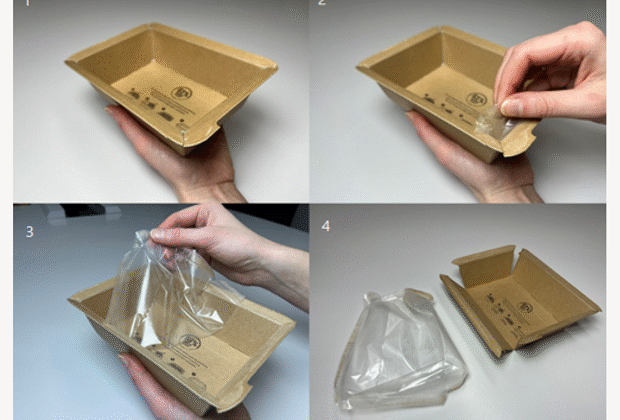Consumers forgo recycling when material separation is required

A recent consumer study by Nofima reveals that while people want environmentally friendly packaging, they would often forgo source separation, i.e. recycling of different materials into different bins, if the process requires extra effort. There is a clear desire for solutions where the industry itself handles the separation of combined packaging materials.
Imagine standing in your kitchen with empty food packaging. You want to sort it correctly, but the packaging is made of cardboard covered with a plastic film that can be removed for material recycling. Should you tear it apart, or simply throw everything into general waste? This dilemma directly impacts the extent to which people may actually engage in source separation.
Within the ReFiberPack project, Nofima scientists have investigated how Norwegian consumers respond to new, more sustainable packaging solutions that require a little more effort to separate. The answer is clear: people want to contribute to environmental efforts, but only if it is easy.
How consumers think about packaging
“We want to learn more about Norwegian consumers’ attitudes and habits regarding source separation, food packaging, and acceptance of new packaging solutions,” explains Mads Erling Pedersen, Senior Engineer at Nofima.
The survey, distributed to people of all ages across the country, shows that attitudes towards source separation have become more positive over the past 25 years. over 500 individuals responded. Their answers indicate a willingness to consider the environment and a sense of satisfaction in contributing at home, but motivation wanes if they are required to separate plastic from cardboard before sorting. In such cases, proper recycling may often be abandoned.
Participants in the survey identified food safety as the most important factor when it comes to food packaging, followed by shelf life. These factors are considered more important than environmental friendliness.
Consumers prefer industrial solutions for sorting
“In the project, we are also working on solutions where the industry can manage the necessary separation for material recycling. Consumers were much more positive towards such industrial solutions,” notes Senior Scientist Valérie Lengard Almli at Nofima.
Participants were also asked about various packaging solutions based on combinations of cardboard and plastic materials, with or without recycled content. They rated the solutions on a scale from one to seven according to the following criteria:
- Likelihood of the packaging being source separated
- User-friendliness
- Environmental friendliness
- Food safety
- Shelf life
- Sensory quality
“They perceived packaging solutions containing fibre-based material and less plastic as better for the environment, but less favourable in terms of food safety, shelf life, and sensory quality,” explains Pedersen.
It is important to clarify that not all fibre-based materials are inferior to plastic packaging in terms of food preservation. “We have recently conducted a study on fibre trays, and they perform just as well as plastic trays regarding food quality and shelf life,” points out Nofima scientist Kloce Dongfang Li, who leads the ReFiberPack project.
Counteracting scepticism
“The results are not what we had hoped for, but this is vital information for both packaging and food producers,” emphasises Valérie Almli.
She further notes that environmentally friendly and recyclable packaging solutions are a necessity under new regulations, and that trust in new solutions will develop as consumers gain experience with packaging that is just as safe and effective as previous options.
In the meantime, scientists will explore how best to reduce scepticism and motivate more people to engage in source separation.
Facts about the research
The research is funded by the Research Council of Norway through the ReFiberPack project – Recyclable food packaging based on recycled cellulose and removable barriers.
The project began in 2023 and will continue until 2026. Nofima is leading the project, with partners including Norsus, Grønt Punkt Norge, Norsk Kylling, Sørlandschips, Borregaard, and Ranheim Paper & Board.
The aim is to develop new and recyclable food packaging based on recycled cellulose fibres and removable barriers, so that these two components can be sorted separately and recycled. In this way, the food and packaging industries can both meet new environmental requirements and make it easier for consumers to contribute in practice.


